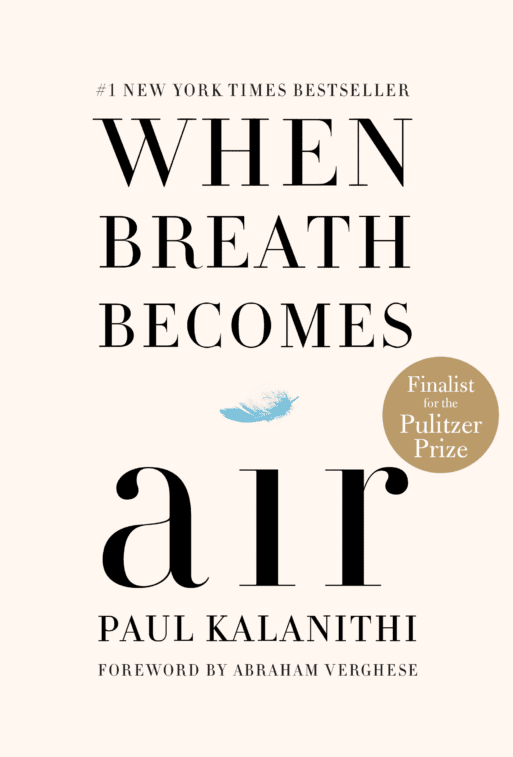 Paul Kalanithi’s cancer became the impetus for his bestselling memoir, “When Breath Becomes Air” – fulfilling his lifelong ambition to become a writer while cutting that life tragically short. The book reveals the story of a neurosurgery resident on the cusp of an illustrious career when he is diagnosed with metastatic lung cancer – throwing him into the role of patient. It is a love letter to the daughter that Paul Kalanithi and his wife, Lucy, resolve to have despite his illness. And it’s an honest critique of the doctor-patient relationship that encourages empathy for all who must navigate those uncertain spaces between life and death.
Paul Kalanithi’s cancer became the impetus for his bestselling memoir, “When Breath Becomes Air” – fulfilling his lifelong ambition to become a writer while cutting that life tragically short. The book reveals the story of a neurosurgery resident on the cusp of an illustrious career when he is diagnosed with metastatic lung cancer – throwing him into the role of patient. It is a love letter to the daughter that Paul Kalanithi and his wife, Lucy, resolve to have despite his illness. And it’s an honest critique of the doctor-patient relationship that encourages empathy for all who must navigate those uncertain spaces between life and death.
In Part I – “In Perfect Health I Begin” – Kalanithi examines the ambiguous moral territory inhabited by doctors and medical students – whether dissecting a cadaver or making life-or-death calls in the operating room. As a neurosurgery resident, Kalanithi finds himself uniquely positioned to address some of life’s hardest questions: “Would you trade your ability – or your mother’s – to talk for a few extra months of mute life? The expansion of your visual blind spot in exchange for eliminating the small possibility of a fatal brain hemorrhage? Your right hand’s function to stop seizures? How much neurologic suffering would you let your child endure before saying that death is preferable? Because the brain mediates our experience of the world, any neurosurgical problem forces a patient and family, ideally with a doctor as a guide, to answer this question: What makes life meaningful enough to go on living?”

Credit: paulkalanithi.com
It’s a question Kalanithi is forced to answer himself in Part II – “Cease Not Till Death.” Kalanithi’s oncologist urges him to focus on what he values, and he struggles to determine what that is. He returns to residency. He starts to write a book. He relapses and leaves residency. He becomes a father. He graduates. And he shares a patient’s view: “As a doctor, you have a sense of what it’s like to be sick, but until you’ve gone through it yourself, you don’t really know,” he writes. “It’s like falling in love or having a kid.”
Kalanithi lived briefly, but fully – in his 37 years, he did all three. Kalanithi’s marriage to Lucy – an internist – provides a solid backdrop to his stories of fatherhood, work and illness. And Lucy pens a touching epilogue. “It never occurred to me that you could love someone the same way after he was gone,” she writes, “that I would continue to feel such love and gratitude alongside the terrible sorrow.” She shares her grieving rituals and emphasizes Paul’s aim in writing “When Breath Becomes Air” – to help others face their own mortality.
“He did more than just describe the terrain,” she writes. “He traversed it bravely.”
Epilogue: Paul Kalanithi died in 2015, and “When Breath Becomes Air” was published in 2016. In a strange twist of fate, Lucy Kalanithi has since met and fallen in love with John Duberstein – the widower of Nina Riggs, who chronicled her impending death at 39 from breast cancer in “The Bright Hour.”

 “When Breath Becomes Air” by Paul Kalanithi
“When Breath Becomes Air” by Paul Kalanithi


 “Help Me, Helen”
“Help Me, Helen”
 Recovering Cremation Remains After the Los Angeles Fires
Recovering Cremation Remains After the Los Angeles Fires
 “As Tears Go By” by Marianne Faithfull
“As Tears Go By” by Marianne Faithfull














